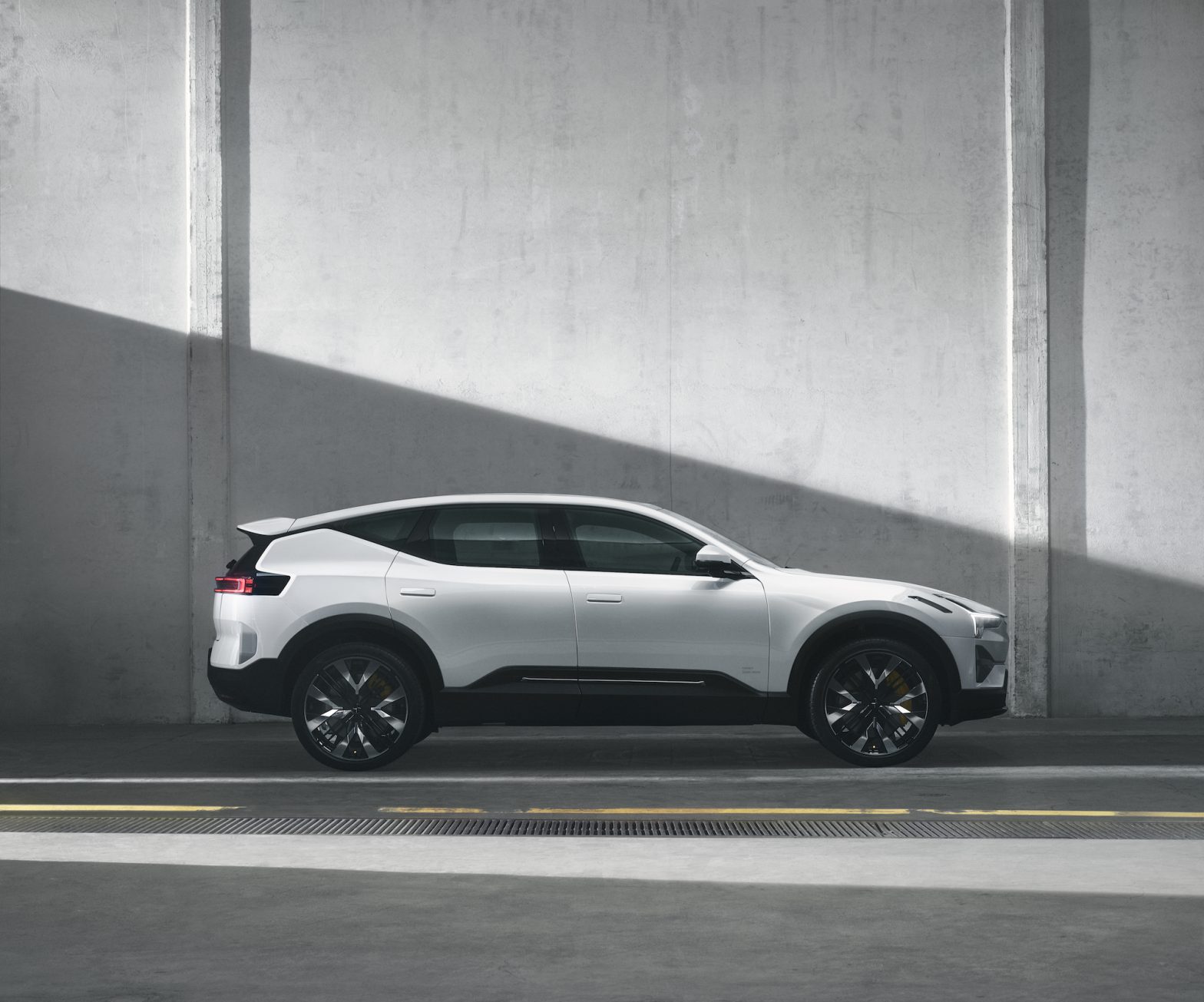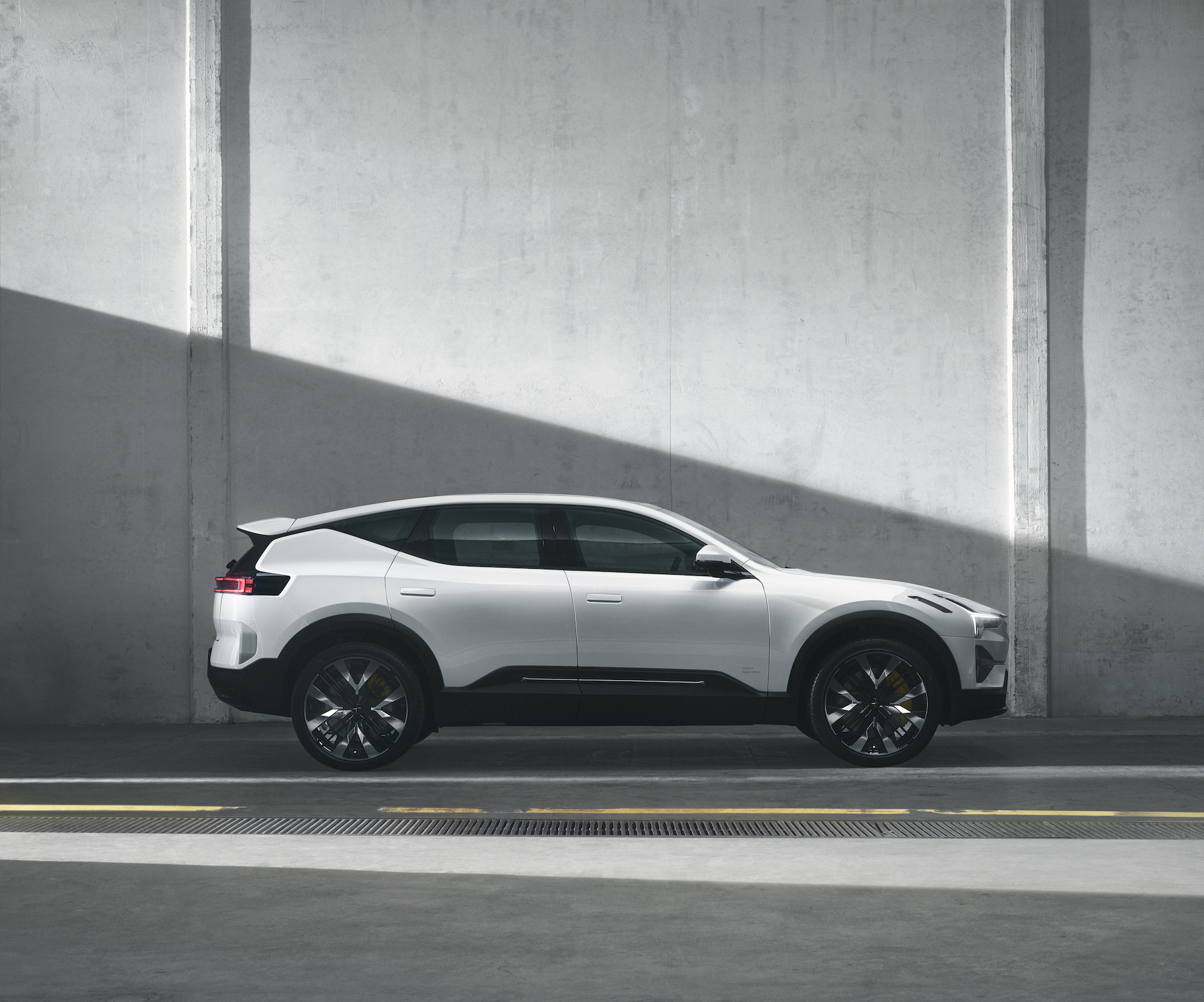EV maker Polestar has unveiled the Polestar 3, its first SUV designed to help propel the startup to bona fide mass market automaker.
Priced from $83,900, the 489-horsepower Polestar 3 will achieve an estimated 300-mile range, according to Polestar — a competitive set of figures designed to compete with a forthcoming crop of battery-electric luxury SUVs from Mercedes-Benz, Maserati and the like. Polestar’s five-passenger SUV is also available with a Performance Pack that raises output to 517 horsepower.
The Swedish electric performance car company is still small by any measurement — delivering just 6,638 cars in the U.S. for the first nine months of the year, compared with Tesla’s 390,814. But so far the company seems to be one of the few EV SPACs still going strong, in part due to support from its largest shareholders, Volvo and Geely.
Polestar went public in a SPAC deal with Gores Guggenheim in June. It has managed to avoid the pitfalls facing most other EV manufacturers that have opted to go public by merging with a special purpose acquisition company rather than completing an initial public offering — namely cash crunches, investor lawsuits, federal investigations and bankruptcies.
It’s also one of the few EV SPACs with actual production vehicles on the road and more coming. Polestar has said it’s on track to deliver 50,000 cars worldwide this year, and plans to scale up to 290,000 cars annually by 2025 — about 10 times the automaker’s 2021 sales.
Those are impressive targets, given that the brand currently sells just one model, the 270-mile range Polestar 2 battery-electric sedan. Its debut model, 600-horsepower Polestar 1 plug-in hybrid, was discontinued in December.
The arrival of the Polestar 3 SUV, a new entrant in a profitable, fast-growing segment, could be a game-changer, as it was for Maserati, Porsche, Lamborghini and other staunch sedan brands that took the leap into utility vehicles.
Polestar 3 details
The company will begin building the Polestar 3 at Volvo Cars’ plant in Chengdu, China, next summer and its Ridgeville, South Carolina facility in mid-2024. The SUV is expected to arrive in showrooms in the U.S., Europe and China late next year, followed by the Middle East and Asia Pacific. All told, the automaker hopes to have showrooms in 30 countries by the end of 2023.
Polestar plans to continue launching new models at a steady clip, starting with the 2024 arrival of the Polestar 4 SUV coupe. The Polestar 5 4-door GT and Polestar 6, an 884-horsepower hard-top convertible, are slated to follow.
Polestar plans to sway SUV customers to the new brand with a cutting-edge technology palette, which includes hardware from lidar supplier Luminar and software from Zenseact, Volvo’s division for advanced driver assistance systems. Analysts note that certain new Volvo safety features may debut in Polestar models first.
The Polestar 3 will share some equipment and features with Volvo’s upcoming EX90 battery-electric SUV, including bidirectional charging, which allows the car’s battery to feed power back to the grid when not in use.
Polestar said the SUV will use centralized computing from Nvidia as its “AI brain,” processing data from its five radar modules, five external cameras and 12 external ultrasonic sensors to power its advanced safety features. An optional Pilot Pack that features a lidar system lets the Polestar 3 scan its surroundings in greater detail, allowing for over-the-air updates as Level 3 and Level 4 autonomous driving becomes legal on public roads.


